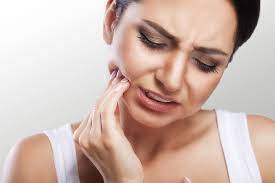1. Toothache
Your scheduled visit to the dentist can’t arrive fast enough. Warm water mouthwash, flossing to eliminate food from between teeth, and taking an over-the-counter pain killer can all be helpful while you wait. If you experience fever, swelling, or pus around the affected tooth, you may have an abscess, a more dangerous condition.
Thus, it’s of great importance to have your teeth checked regularly. You can book an appointment with Orange Park Smiles – the best dental clinic FL, United States.
2. Stained Teeth
Your teeth are like your laundry in that many stains can be removed with the proper method. Your teeth can become discolored due to trauma, traumatizing foods, drugs, tobacco, and trauma. There are three ways to whiten them.
A whitening substance and a specialized light can be used by your dentist. Alternately, you can bleach them at home using a plastic tray and gel purchased from a store or your dentist. Simple options like whitening toothpaste and rinses only get rid of superficial stains.
3. Cavities
It’s bad news that your teeth have these tiny holes. You develop them as a result of plaque, a sticky bacteria that steadily erodes the hard enamel coating on your teeth. Additionally, tooth decay along the borders of previous fillings and along the gum line might affect adults.
You can avoid it by using fluoride toothpaste at least twice per day, limiting your intake of sugary foods, flossing every day, rinsing with fluoride mouthwash, and keeping up with your dental appointments. If you think you might benefit from a sealant, ask your dentist.
4. Chipped Tooth
It is the most common form of dental harm. An incident may result in a chip. Likewise, something far less dramatic like eating popcorn can be done. If the chip is significant, your dentist might advise getting a crown or gluing the chipped region back together with a sturdy resin material. You might require a root canal followed by a veneer or crown if the pulp is in danger.
5. Impacted Teeth
“Impacted” refers to an adult tooth that doesn’t grow normally. It typically occurs when a tooth is impacted on soft tissue, bone, or another tooth. A dentist could advise not worrying about it if you don’t find it bothersome. But an oral surgeon can remove it if it hurts or could lead to issues in the future.
6. Cracked Tooth
You may not know how it happened, or perhaps you were chewing while playing football without a mouthguard, but you now have a cracked tooth. Can the tooth be saved by your dentist? It varies.
For teeth with cracks, the majority of dentists advise crowns to stop the crack from getting worse. If the tooth is both heat and cold sensitive, the issue is more complicated. Until you visit the dentist, try to chew on the opposite side. You might require a root canal and a crown if the crack extends past the gum line. However, if the crack is more severe, the tooth must be extracted. Fillings may make cracks more likely to occur.







